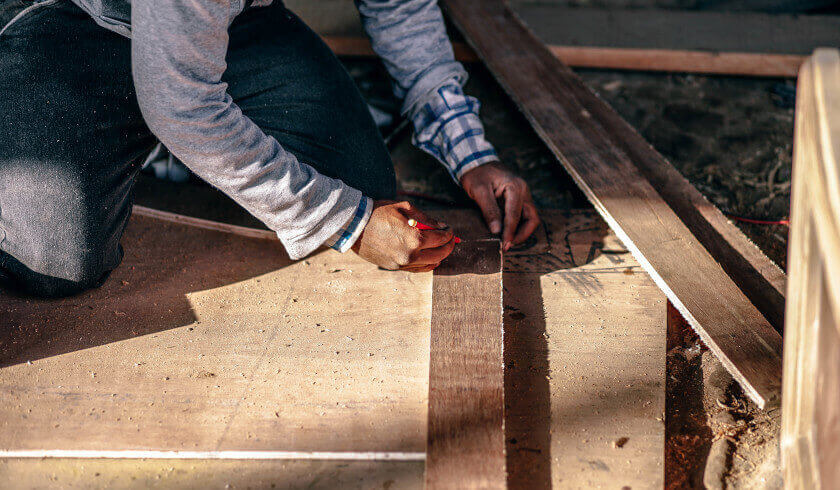Should the government stimulate the housing sector?
The government has spent over $200 billion in its three stimulus packages to help support jobs and stabilise the economy.

Despite its best efforts, however, one of the few essential services, the construction sector is currently lagging behind, with calls to fast track projects to kickstart the sector.
“The 5.3 per cent fall in the number of building and construction industry jobs revealed in the last six weeks shown in data released by the ABS is alarming and reinforces the need for immediate government stimulus measures,” Denita Wawn, Master Builders Australia’s CEO, said.
“Stimulus can’t wait because jobs are being lost now, and we need to protect the livelihoods of the 1.2 million people employed by the industry around the country and the viability of the nearly 400,000 building and construction businesses that pay their wages,” she continued.
While the first stimulus package of $17.6 billion should directly help the small and medium-sized businesses that are turning over less than $50 million, due to payments of $2,000 to $25,000 as well as wage subsidies to hire and retain apprentices, the numbers indicate it has not gone far enough.
“Results of a new Master Builders survey of its members shows that 73 percent have seen a substantial fall in forward work on their books of 40 per cent on average,” Ms Wawn said.
The housing sector was vital in helping Australia to recover from the last major economic shock of the GFC, but the impact of COVID-19 is hitting particularly hard right now.
“Governments must act now because while many builders and tradies are getting by on work that commenced prior to the onset of COVID-19, that work is fast running out and new orders have fallen off a cliff, “she said.
Propertyology’s head of research, Simon Pressley, previously asserted that the property sector can get Australia out of its “coronavirus cocoon”.
Twenty-nine years ago, real estate led the rebound out of Australia’s last recession. The unemployment rate hovered around 10 per cent during the 1991 recession year and the subsequent two years.
Over those three years ending 1993, eight out of eight capital cities produced property price growth (yes, growth) of between 2 percent (Melbourne) and 27 percent (Perth). Regional property markets were as strong, if not stronger, including Townsville (37 percent), Toowoomba (33 percent) and Wagga Wagga (22 percent).
It was a similar story 12 years ago with the global financial crisis – the biggest economic downturn in history.
Property prices again increased in eight out of eight capital cities over the three years ending 2010. Darwin (32 percent) and Melbourne (21 percent) were the best-performing capitals, while Ballarat (19 percent), Bendigo and Launceston (both 18 percent) and Armidale (17 percent) were among many strong regional property markets.
|
Loading form...
|
1991-93 (recession) |
2008-10 (GFC) |
2020-22 (COVID-19) |
|
RBA Cash Rate |
10% - 6% |
7% - 4% |
0.5% - xx |
|
Unemployment Rate |
9.5% - 11% |
4.3% - 5.2% |
5.2% - xx |
|
Price Growth – Adelaide SA |
Na |
12% |
TBA |
|
Price Growth – Brisbane QLD |
17% |
1% |
TBA |
|
Price Growth – Canberra ACT |
26% |
15% |
TBA |
|
Price Growth – Darwin NT |
Na |
32% |
TBA |
|
Price Growth – Hobart TAS |
20% |
9% |
TBA |
|
Price Growth – Melbourne VIC |
2% |
21% |
TBA |
|
Price Growth – Perth WA |
27% |
2% |
TBA |
|
Price Growth – Sydney NSW |
10% |
16% |
TBA |
|
Price Growth – Armidale NSW |
11% |
17% |
TBA |
|
Price Growth – Wagga Wagga NSW |
22% |
15% |
TBA |
|
Price Growth – Toowoomba QLD |
33% |
19% |
TBA |
|
Price Growth – Townsville QLD |
37% |
6% |
TBA |
|
Price Growth – Launceston TAS |
14% |
18% |
TBA |
|
Price Growth – Ballarat VIC |
3% |
19% |
TBA |
|
Price Growth – Bendigo VIC |
7% |
18% |
TBA |
|
Price Growth – Busselton WA |
24% |
-5% |
TBA
You need to be a member to post comments. Become a member for free today!
More from this writer: |
